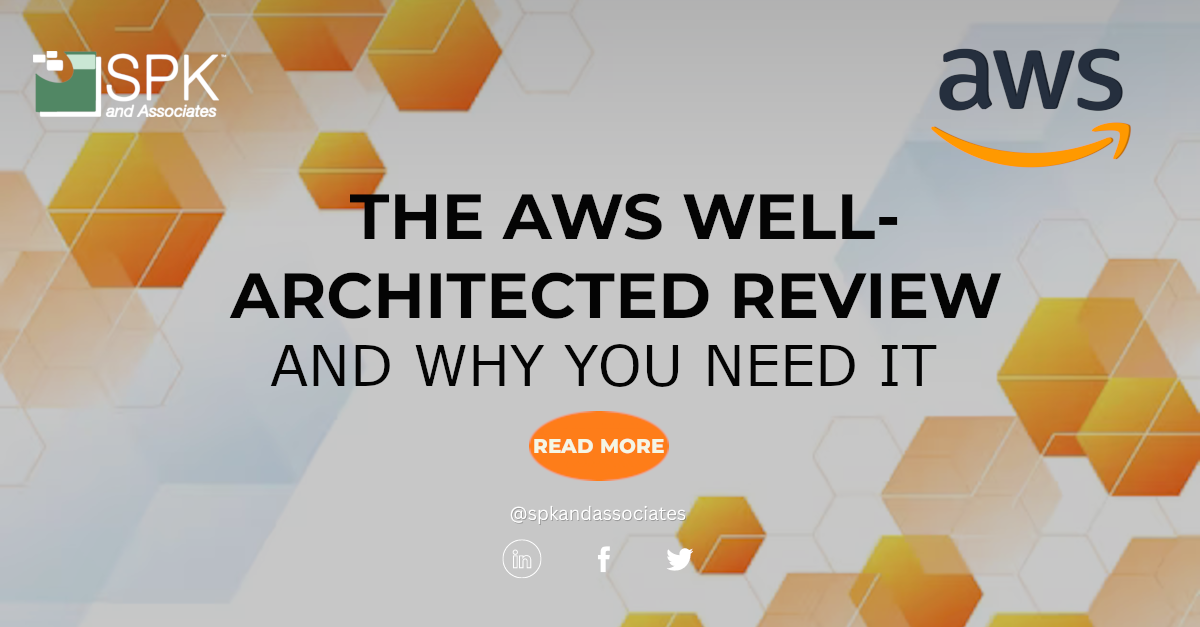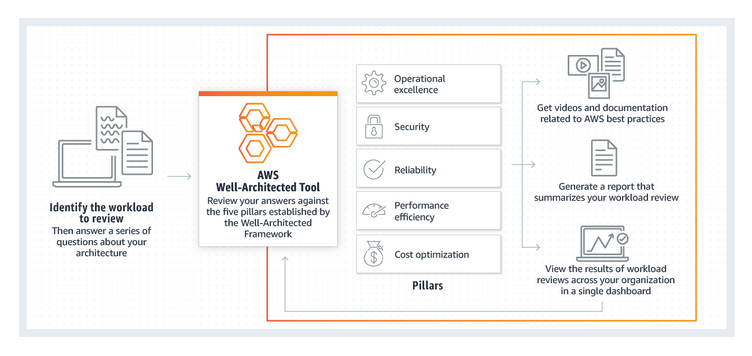Maintaining your AWS infrastructure to ensure it remains secure, high-performing, resilient, and efficient should be a scheduled activity. So, to maintain your posture, AWS has developed the Well-Architected Framework. Essentially, this details a systematic approach for an AWS review so you can evaluate, implement, and scale AWS architectures.
Below, we have detailed the importance of conducting a Well-Architected Review and how you can optimize your AWS environment.
Why Conduct an AWS Well-Architected Review?
Firstly, your AWS environment needs to be dynamic. That means it has to flex with constant changes in infrastructure, configurations, and services. So, to mitigate risks and ensure the effectiveness of your infrastructure, it is recommended a Well-Architected Review is completed every 12-18 months. Essentially, this review provides a thorough evaluation of your AWS architecture against the five core pillars:
- Operational Excellence.
- Security.
- Reliability.
- Performance Efficiency.
- Cost Optimization.

The Core Components of the Well-Architected Framework
1. Operational Excellence
Firstly, the Operational Excellence pillar focuses on streamlining processes, enhancing efficiency, and reducing operational issues. Additionally, it involves defining operational goals, establishing monitoring systems, automating tasks, and continuously improving operational aspects.
2. Security
Secondly, security is of utmost importance in any cloud environment – regardless of which provider you choose. That’s why the AWS Well-Architected Security pillar emphasizes implementing security measures to protect your data, systems, and privacy. Furthermore, it covers areas such as identity and access management, data protection, infrastructure protection, and incident response.
3. Reliability
Thirdly, the Reliability pillar ensures your workload operates seamlessly. That means, even in the face of failure. It involves designing architectures that can recover from disruptions, scaling resources to meet demand, and managing changes to minimize downtime.
4. Performance Efficiency
Next up is the Performance Efficiency pillar which focuses on optimizing resource utilization. And it does this to maximize performance and cost-effectiveness. It includes:
- Selecting appropriate instance types.
- Optimizing storage and database configurations.
- Implementing caching mechanisms.
- Monitoring performance metrics.
5. Cost Optimization
Lastly, Cost Optimization entails continuously improving cost-effectiveness without sacrificing performance or security. Furthermore, it involves:
- Rightsizing your resources.
- Leveraging pricing models.
- Using managed services.
- Designing architectures that can adapt to changing business demands.
The Well-Architected Review Process
SPK are certified AWS experts. During a Well-Architected Review (WAR), we will assess your workload. And our proven W-AR process involves the following steps:
- Plan and Prepare: Define the scope and objectives of the review. Gather relevant information about your workload, including architectural diagrams, documentation, and performance data.
- Review and Evaluate: Next, we will assess your workload against the five pillars of the Well-Architected Framework. Then, we’ll identify strengths, weaknesses, risks, and areas for improvement. Plus, we’ll prioritize actions based on their impact and feasibility.
- Remediate and Optimize: Now it will be time to develop an action plan to address identified issues and implement best practices. We’ll leverage AWS services, features, and architectural patterns to optimize your performance, security, and cost efficiency.
- Review and Iterate: Lastly, we’ll continuously monitor and review your workload’s performance, making adjustments and improvements as needed. Additionally, we’ll follow up by regularly reassessing your architecture against the Well-Architected Framework to ensure ongoing alignment with best practices.
Benefits of a Well-Architected Review
There are plenty of benefits to completing a Well-Architected review, We’ve listed the top ones below. Conversely, if you don’t complete a W-AR, it’s possible you may be expecting the opposite of these benefits in the future:
- Proactive Issue Identification: The review process helps identify potential issues with your AWS environment. And it helps identify them before they become significant problems, minimizing downtime and improving system resilience.
- Cost Savings: By optimizing your resource usage and implementing cost-effective strategies, a Well-Architected Review can uncover opportunities for significant cost savings. Basically, that’s money you can reinvest in other projects.
- Efficiency Enhancements: Fine-tuning your AWS infrastructure based on the review’s recommendations can result in improved performance and operational efficiency. That means it enables you to achieve your business goals more effectively.
- Compliance and Security Assurance: By aligning your architecture with the Security pillar, you can improve data protection. Plus, you can reduce the risk of security breaches, and improve compliance with regulatory requirements.
Conclusion
The AWS Well-Architected Framework offers a structured approach to assess and optimize your AWS infrastructure. So, by conducting a Well-Architected Review allows you to proactively address potential issues. Additionally, you can optimize performance, enhance security, and achieve substantial cost savings.
SPK’s certified AWS experts are equipped to guide you through the review process and assist in implementing AWS best practices for your infrastructure.
Contact us here to arrange your AWS Well-Architected review.







